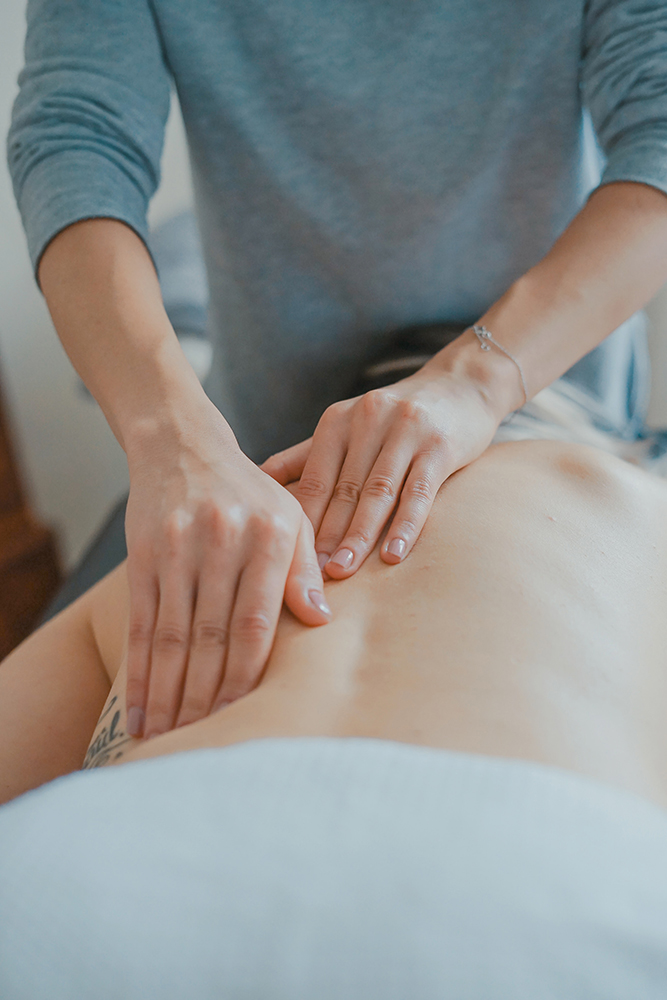


Relieving muscle tension can get very expensive, very fast. But one option that people often overlook is foam rolling. Foam rolling is one of the most steady ways to alleviate delayed-onset muscle soreness (DOMS), receive myofascial release, help with flexibility and increase range of motion. And the good news? Almost every local gym (high-end or not) will have a few rollers you can try out.
The National Center for Biotechnology Information conducted a study that showed foam rolling enhanced recovery and reduced physical performance decrements, and with just a 20-minute stint, “foam rolling on a high-density roller immediately post-exercise and every 24 hours thereafter may reduce muscle tenderness.” I know what you’re thinking, why foam roll when you can just get a massage? Well interestingly enough, in this study, it was unclear whether post-exercise massage is beneficial for muscular function. Not to mention, various combinations of therapist-provided massage did not affect the isokinetic and isometric muscle force.
I’m sure by now you’re probably wondering what else foam rolling is good for? Not only does it help with DOMS, but it also improves circulation throughout your entire body which helps oxygenate the blood, stimulate lymphatic drainage and release toxins from your body. The roller also helps aid your joints, reduces inflammation, and improves the connections to your core muscles. And because the roller boosts circulation to tissues and organs, it can make the skin and muscles look and feel much more youthful.
Though massage therapy feels incredible, your money might be better spent elsewhere. Some things to keep in mind is that when you foam roll you should never be in pain. Sure, some areas are sorer than others, but it should never hurt. With the right roller and right method, foam rolling should be enjoyable and feel good. Finding the right roller can be a challenge in itself. Head to the foam roller master Lauren Roxburgh to see which rollers she has personally developed. Lastly, some common foam rolling mistakes that should always be avoided is to never roll on your cervical spine (the neck) or the lumbar vertebrae (the bony part of your lower back/spine). Because it’s bony you can probably tell that there’s less soft tissue padding those areas and rolling them out can be excruciatingly painful.
Intrigued? Instead of describing how to properly execute some techniques, I figured learning from a pro would be ideal. See here for an amazing foam rolling tutorial with Lauren Roxburgh.
筋肉の緊張を和らげる方法として色々な選択肢がありますが、例えば非常に高価ですが速く効果を感じられるものも、中にはあります。 しかし、皆がしばしば見落とすオプションの1つで、フォームローリングという物があります。 フォームローリングは、遅発性筋肉痛(DOMS)を軽減し、筋膜のリリースを受け取り、柔軟性を高め、可動域を広げる最も安定した方法の1つです。 これの良いところは、ほぼすべての地元のジム(ハイエンドであろうとなかろうと)にローラーがいくつか設置されているという事です。
国立バイオテクノロジー情報センターは、フォームローリングの研究を実施しました。 ローリングにより回復が向上し、身体的パフォーマンスの低下が減少し、「運動直後と、その後24時間ごとに、1度にわずか20分間高密度ローラーを使用すると、筋肉の圧痛が軽減される場合があります。」 マッサージを選択することもできるのに、フォームロールを選ぶべき理由はなんだと思いますか? 興味深いことに、この研究では、運動後のマッサージが筋肉機能に有益かどうかは明らかにすることが出来ませんでした。セラピストが提供するマッサージのさまざまな組み合わせは、アイソキネティックおよびアイソメトリックの筋力への影響はみられませんでした。
ここまでくるとフォームローリングは他に何が良いのかと疑問に思っているのではないでしょうか? DOMSに役立つだけでなく、全身の循環を改善し、血液の酸素化、リンパドレナージの刺激、体からの毒素の放出を助けます。 ローラーはまた、関節の負担や炎症を軽減し、コアマッスルと各パーツの連携を改善します。 また、ローラーは各組織や器官への循環を促進するため、肌や筋肉の見た目や感覚をより若々しくすることができます。
マッサージ療法はとても素晴らしいものですが、時にはお金を他の用途に使う方が良いこともあります。 心に留めておくべきいくつかのことは、あなたがフォームロールをするとき、決して痛みを感じてはならないということです。 確かに、身体のパーツによっては、他のエリアよりも痛い事もありますが、決して傷つけないように注意してください。 適切なローラーを、適切な方法で使用すると、ローラの転がり方が楽になり、気分も良くなるはずです。 適切なローラーを見つけること自体が課題になる場合があります。 フォームローラーの達人であるローレン ロクスバラが、個人的に開発したローラーなどもあります。 最後に、常に回避する必要がある一般的なフォームローリングの間違った使用方法は、頸椎(首)または腰椎(腰/背骨の骨の部分)を転がさないことです。 骨が多くあるので柔らかい組織が少なく、ローラーを使用すると耐え難い痛みがでることがあります。
そろそろ興味がでてきたのではないですか? いくつかのテクニックを適切に実行する方法を説明する代わりに、プロから学ぶことが理想的だと考えました。 Lauren Roxburghのすばらしいフォームローリングチュートリアルについては、こちらをご確認ください。